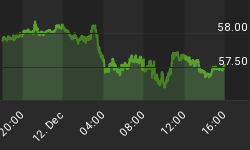There was a book written in the 1970s called "The Limits to Growth" regarded by some as a seminal work on the dangers of the irresistible force of exponential economic growth meeting the immovable rock of limited natural resources. As it turned out, it was the rock that was immovable and the force that was all too resistible.
However, you would not have thought that back in the early 1980s when the book was rushed away by a torrent of cheap oil and then buried under a mountain of ramped up production in all manner of metals and minerals.
The bad days of the 1980 recession was over and the good times could roll again as the US and world economy began to pick up steam again. Jimmy Carter's woolly jumpers and White House solar panels were consigned to the history dump (non-recycling of course) and the stock market took off like a rocket to unheard of heights.
As I stood on the other side of that great economic boom of 1982-1999 contemplating the speculative and hedonistic excesses of men, that ageing book fell into my hands. I am currently writing a series on the declining reserves of precious metals worldwide for my newsletter and to my pleasant surprise I found estimates of geological reserves of various metals in the book. This was an opportunity to see how gold and silver reserves had fared since that book was published in 1974.
To start the exercise, I consulted the United States Geological Survey to get their estimates of gold and silver reserves. The economically extractable reserves and the larger reserve base are given below in ounces. Using the USGS estimates of 2005 mine production, we arrive at the nominal reserve lives in years for both the reserves and reserve base.
| USGS | Reserves | Reserve base | Production | Reserve life |
| GOLD | 1.35 billion | 2.89 billion | 78.8 million | 17/37 |
| SILVER | 8.7 billion | 18.3 billion | 652 million | 13/28 |
So, depending on how much you think the gold reserves will expand, the king of metals has at least 17 years of economic reserves left. For silver, that number dwindles to at least 13 years. For this and the next table, it is assumed for the sake of simplicity that mine production/consumption will not vary over the calculated reserve life. Now if we consult "The Limits to Growth", what does its table look like? Take a look.
| Limits to Growth | Reserves | Reserve base | Consumption | Reserve life |
| GOLD | 353 million | - | 32 million | 11 |
| SILVER | 5.5 billion | - | 344 million | 16 |
What a difference in the reserve numbers! According to the book, even at constant demand, we should have run out of mineable gold and silver by the end of the 1980s. Obviously, this did not happen and their reserve estimates were way out by an order of magnitude when one adds in 35 years of cumulative mine production since the book was written.
Can we assume that the authors were just a bunch of environmentalist fear mongers? Probably not, when you consider their source was the official US Bureau of Mines "Mineral Facts and Problems" published in 1970.
So in 2006, about 35 years later, we see that gold reserves will run out not in 1983 but no later than 2023. For silver, it is not the suggested 1988 but more like 2018. The margin of error is 40 years and 30 years respectively.
What are the lessons to be learnt here?
Where exactly did we find an extra 40 years of gold production and an extra 30 years worth of silver? The answer is subsequent new discoveries of deposits and technological improvements in mining to make poorer ore grades economic to extract. Undergirding this would be increasing consumer and industrial demand to bolster mine production.
The other factor is geopolitics. With a lot of the world's gold deposits then stuck in communist countries, you could bet that it was virtually closed to foreign companies or the State mining companies were doing a less than sterling job in extracting their resources. That all changed with the fall of the Soviet Empire though we have to admit that the shadow of mine nationalization has once again been spotted lurking in the background.
Finally, does this mean that we can all go to bed happy in the knowledge that gold and silver reserves will continue to expand? Will we all reassemble in another 35 years and be pleasantly surprised to find that there is still a minimum of 11 or 16 years of reserve life left?
The answer to that is a plain and simple "No".
According to the aforementioned USGS data, estimated global gold reserves have been on a downtrend while world mine production has failed to exceed its 2001 high despite increasing demand. Like Peak Oil, the big discoveries have been made and companies are now scouring the Earth to find smaller and lower quality ore deposits. The signs are ominous that the days of ever increasing gold reserves and production may be well and truly over.
Herein lies the raison d'etre of the gold bull market. Decreasing supply and increasing demand. If you are holder of some of the gold that is currently above ground, that can only be good news.
Roland Watson writes the investment newsletter The New Era Investor that can be purchased for an annual subscription of $99. To view a sample copy of the newsletter, please go to http://www.newerainvestor.com/ and click on the "View Sample Issue Here" link to the right.
Comments are invited by emailing the author at newerainvestor@yahoo.co.uk.
















